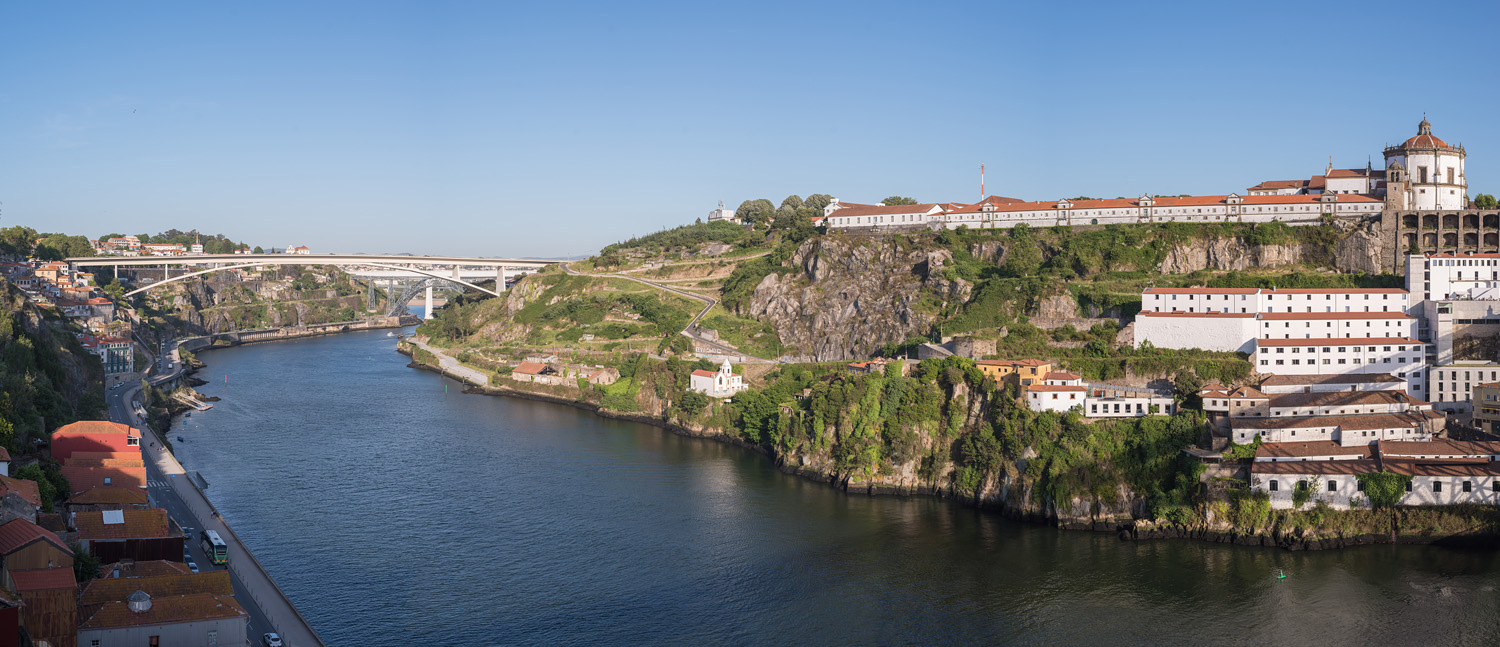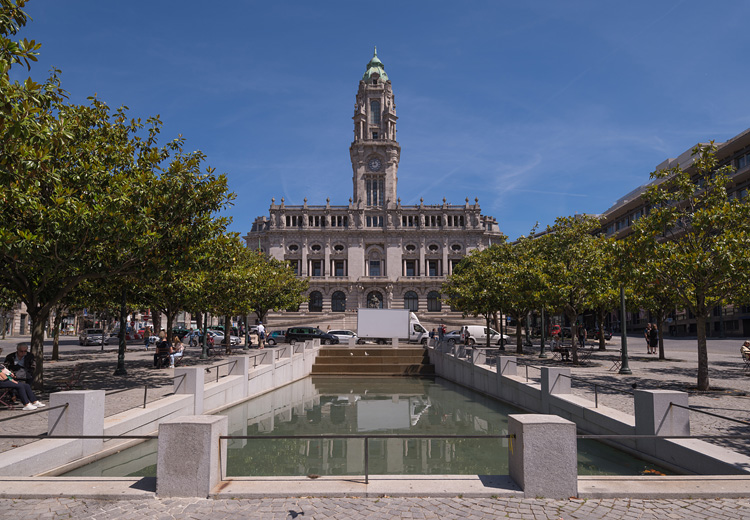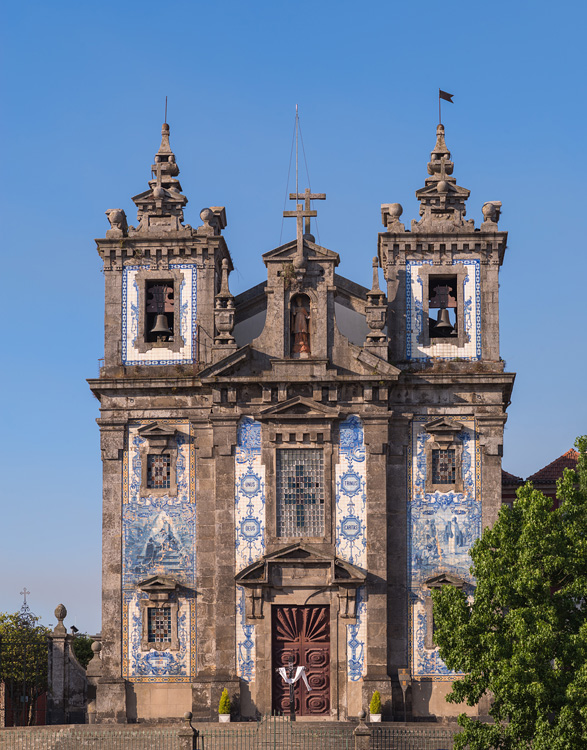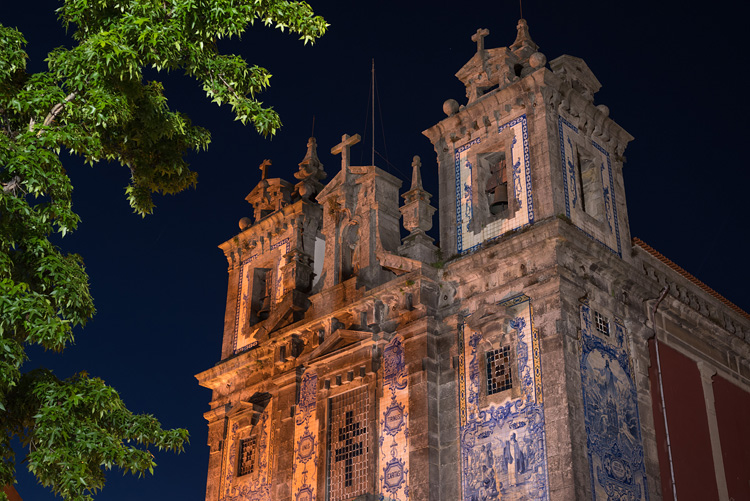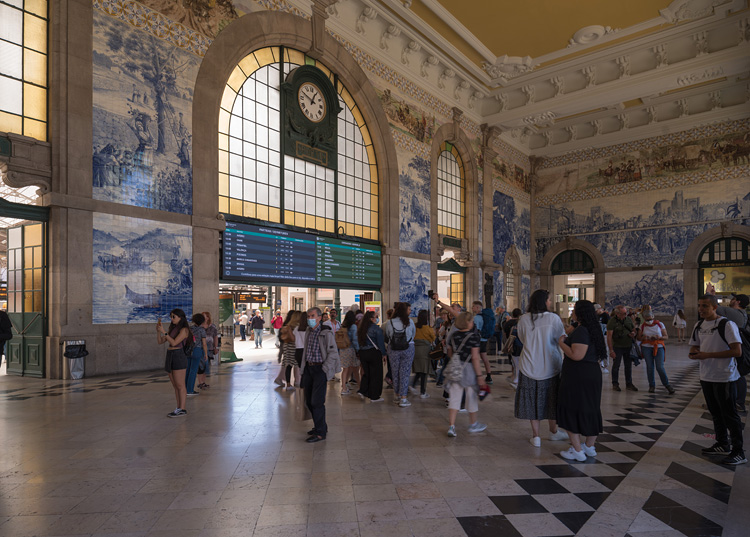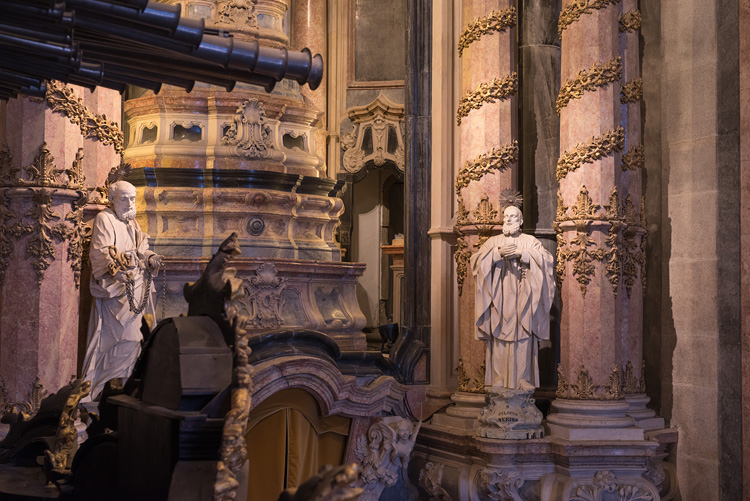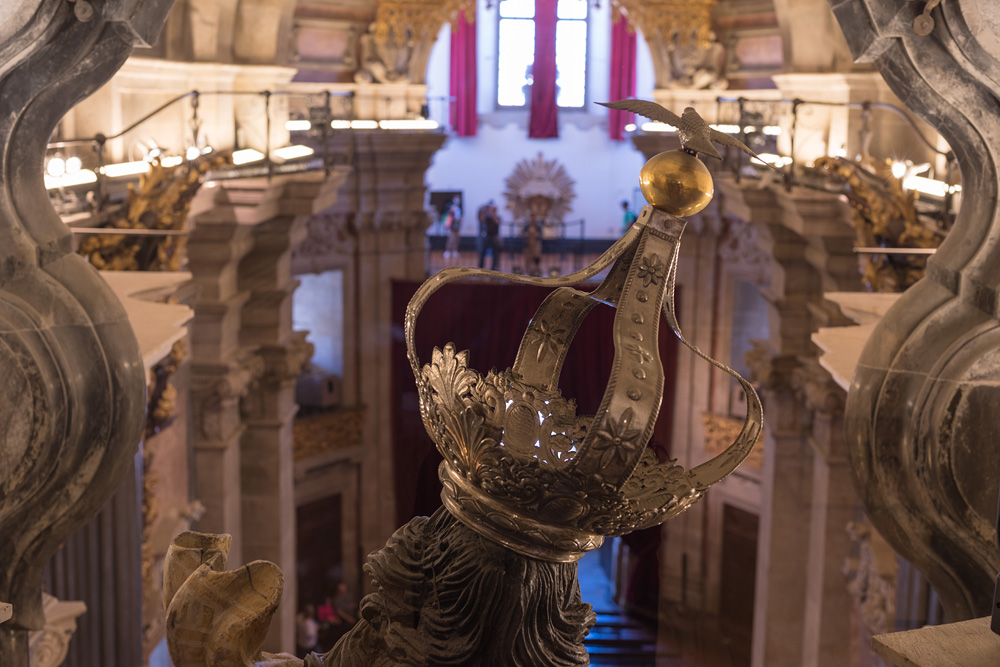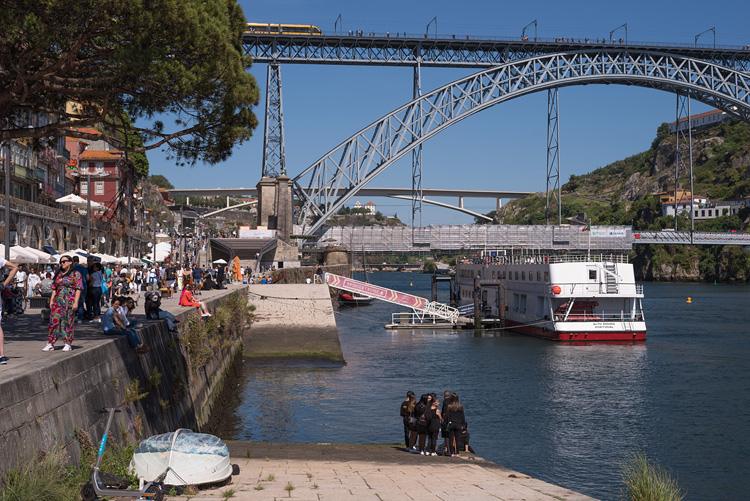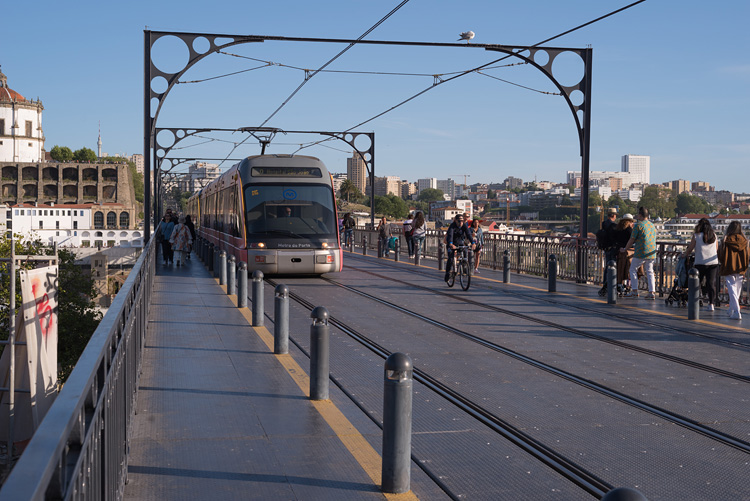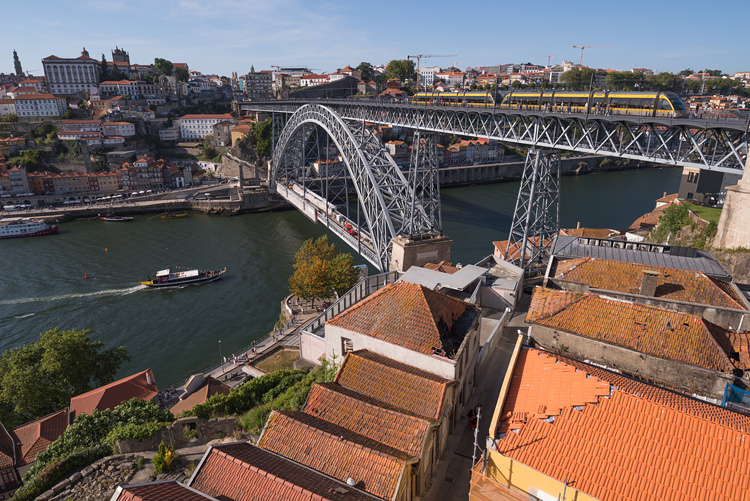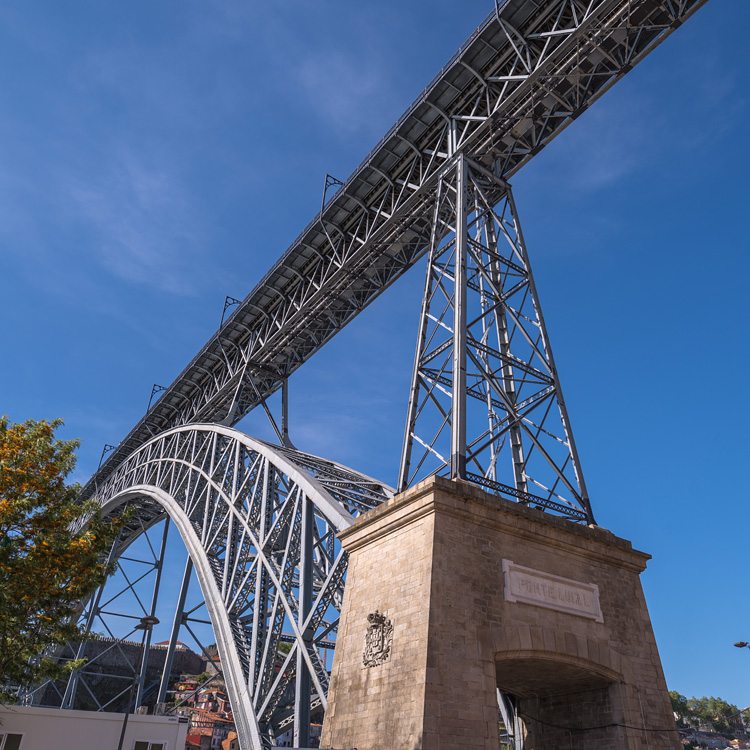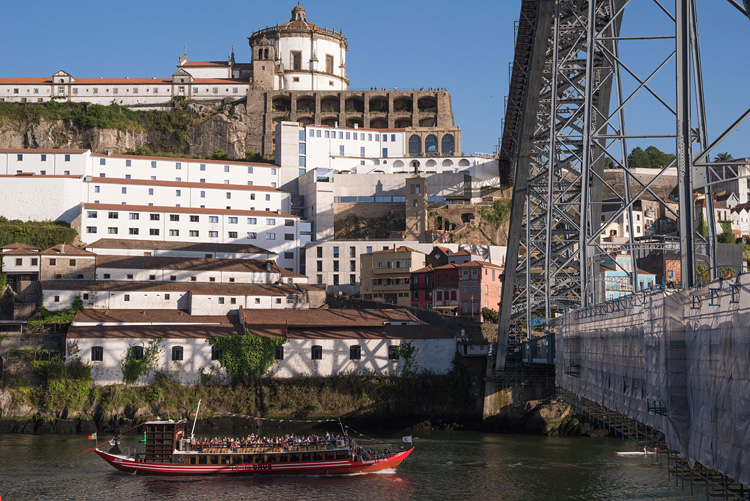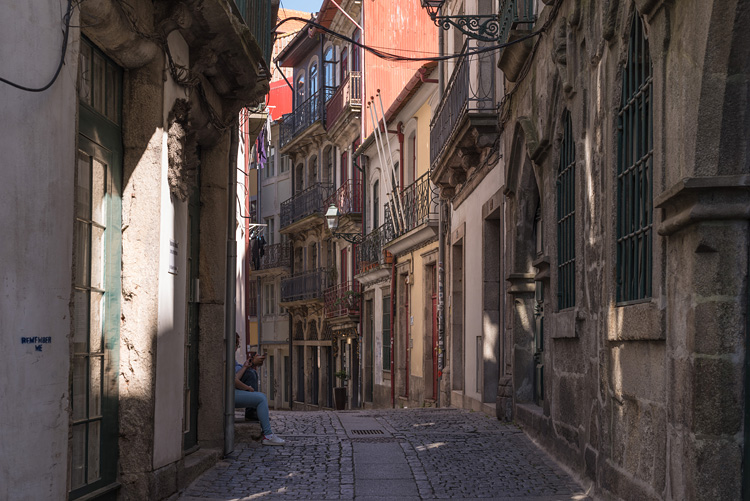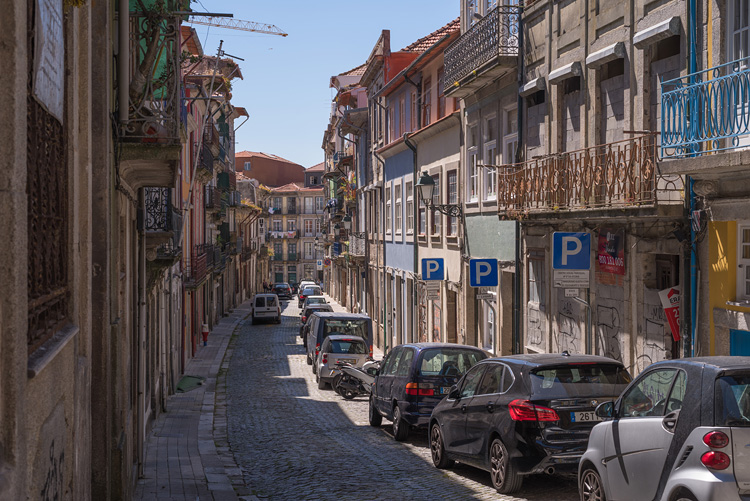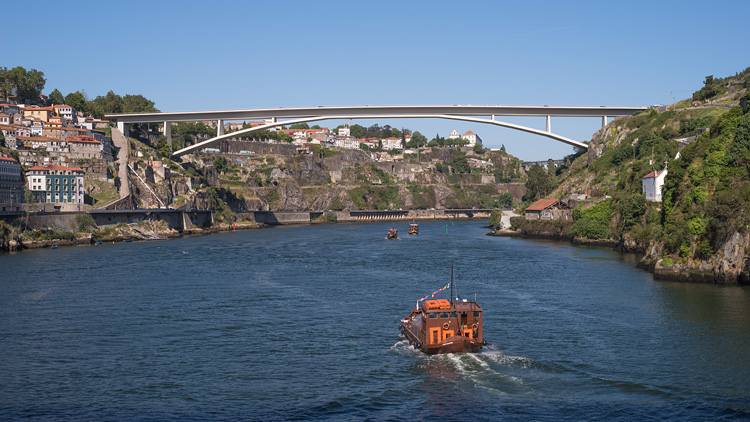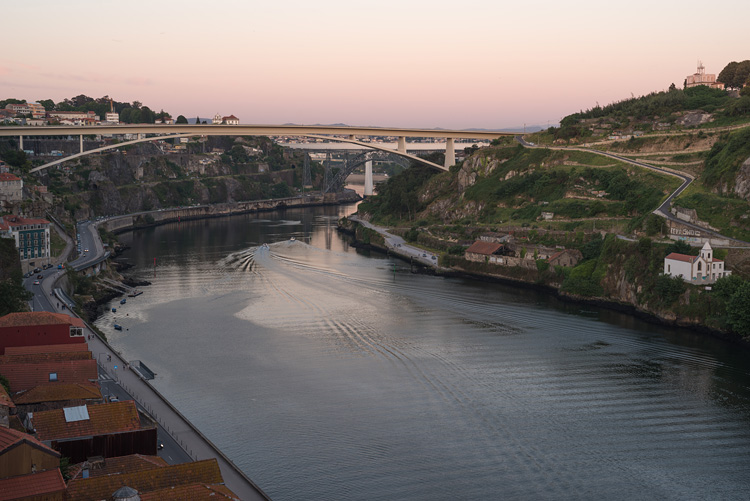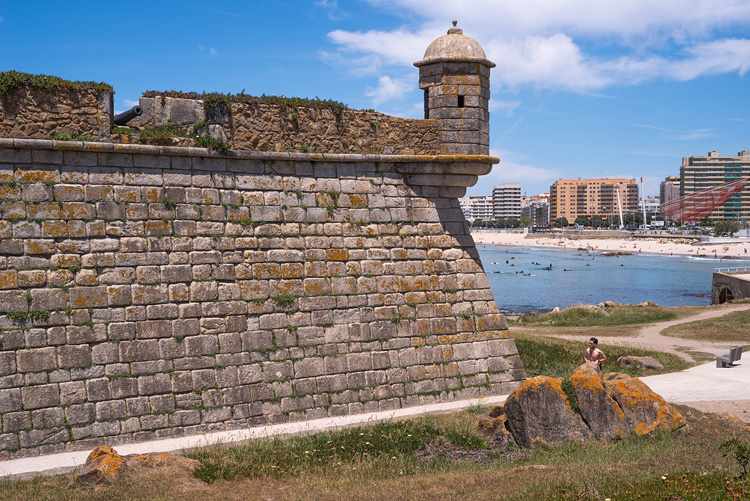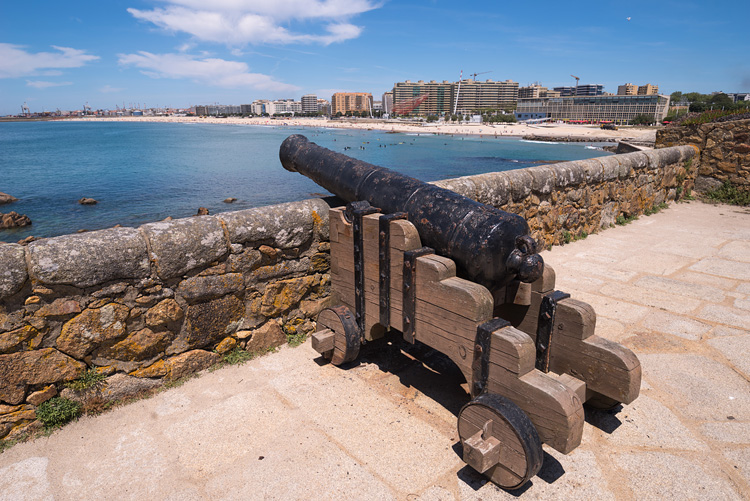Construction started in the 16th century. Due to its prominent location it also gained some military importance. The white buildings located underneath the monastery belong to a hotel.
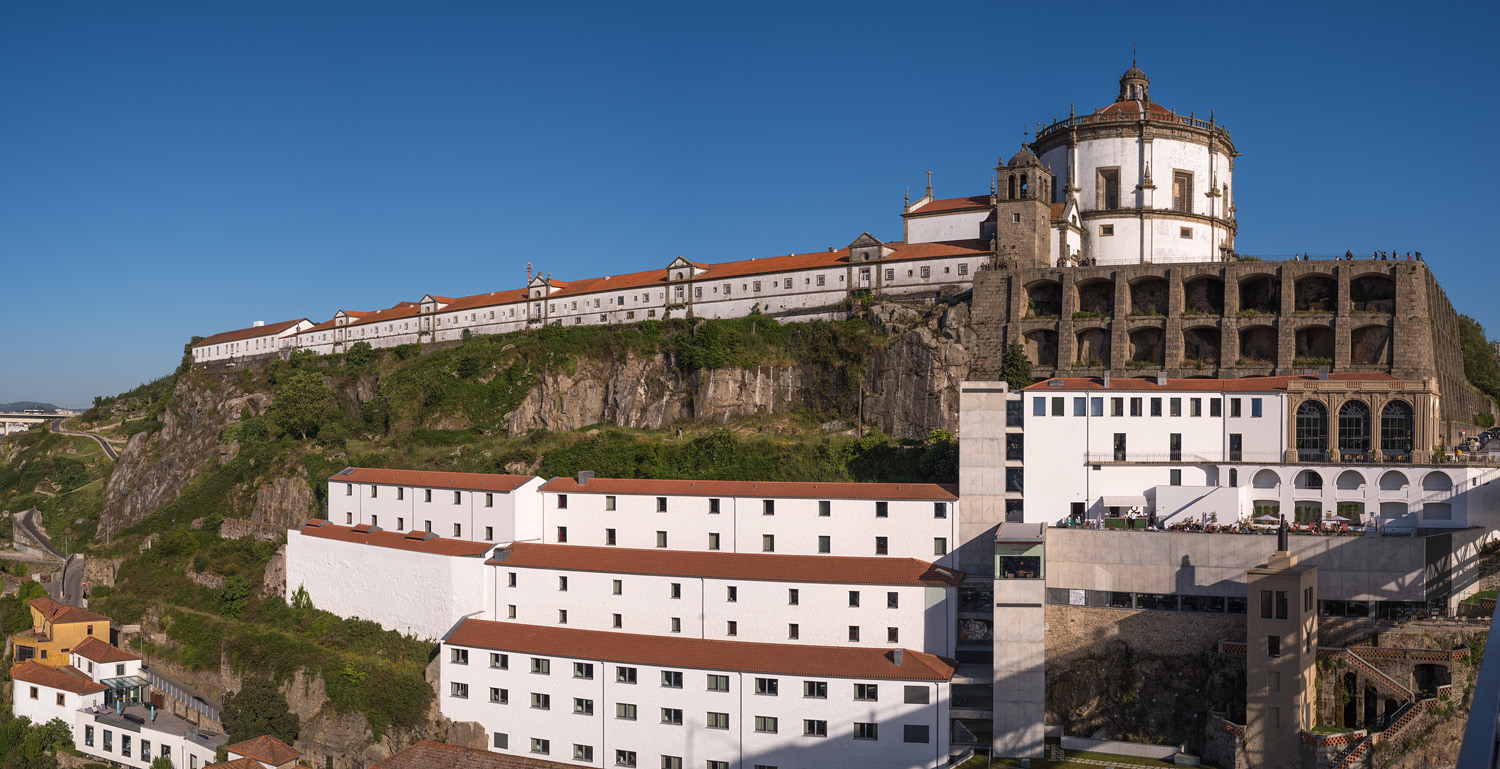
Historic center
Portugal did not participate in WWII, else the center with its many small roads would have met a fate like so many others.
OrangesA garden behind the remnants of the former city wall. |
StatueArnaldo Gama was a writer from Porto and lived in the 19th century. His statue stands on the other side of the city wall.
|
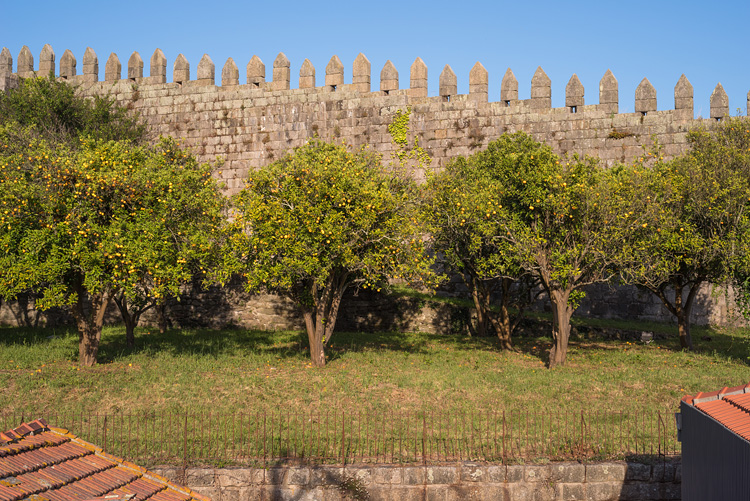
|
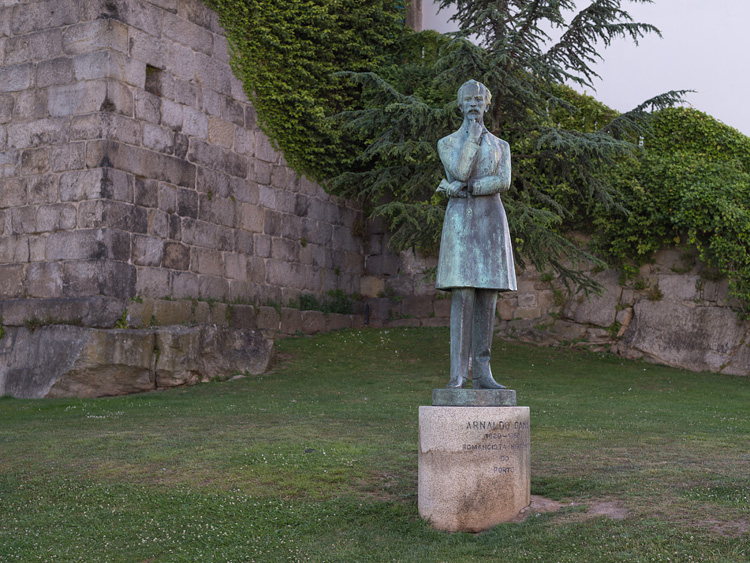
|
PilloryThere are still hooks on it, a bit high for practicability and likely showing the symbolic character of this column. |
CathedralConstruction started in the 12th century and continued over the next 500 years.
|
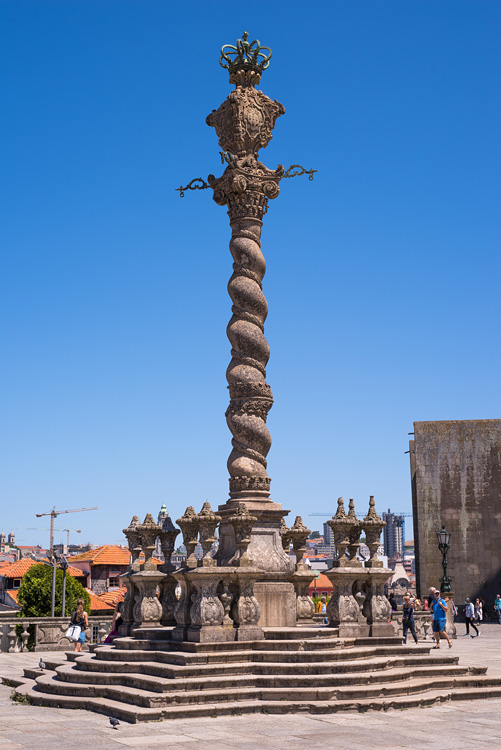
|
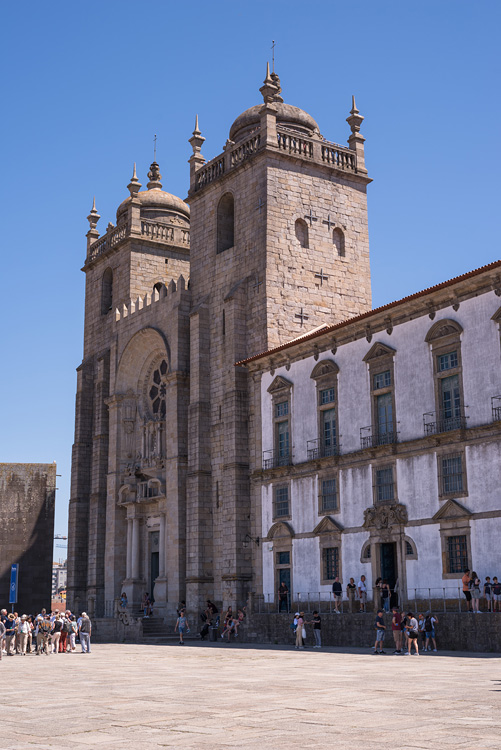
|
Ponte da ArrábidaWhen build in 1963, concrete had replaced steel in the construction of bridges. Time will show if it's better than steel. |
FishNumerous fishes live in the waters of Douro, and rather big ones.
|
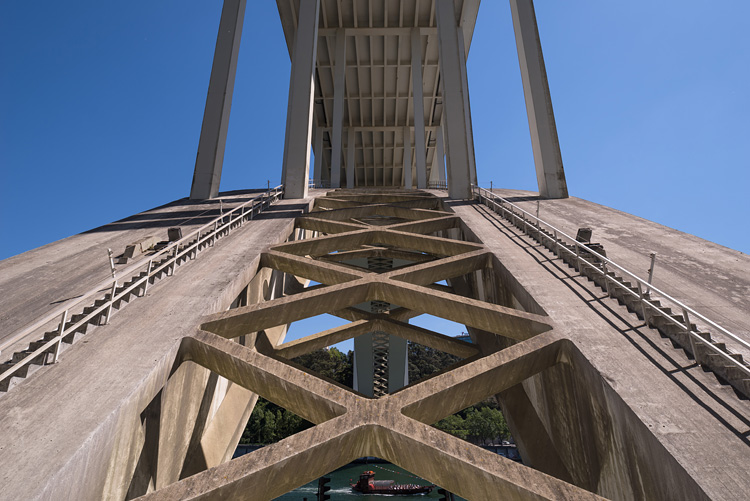
|
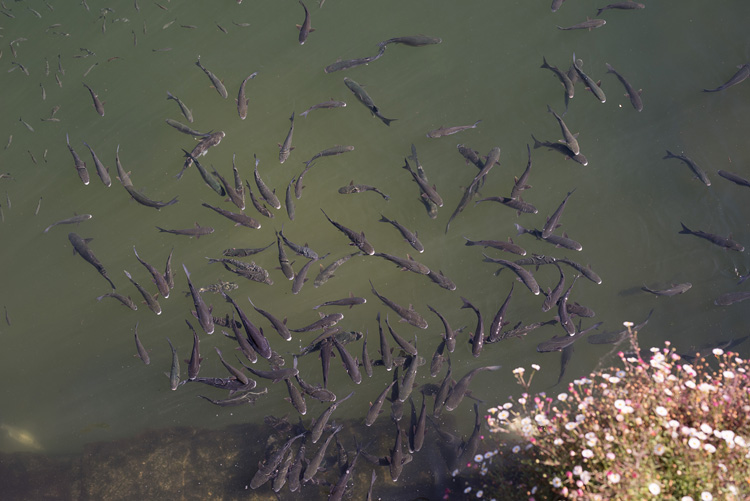
|
Douro
It's a big river with 700 cbm/s and 897 km length. The white bridge is the Ponte do Infante, completed in 2003. Further upstream, Ponte Maria Pia, the oldest bridge in Porto from 1877, and another concrete bridge, the Ponte de São João from 1991, are visible.
Vila Nova de GaiaOn the southern banks of Douro, in Gaia, are the companies with their cellars who trade the famous Port wine. |
BoatsRabelos were the kind of boats used to transport the wine barrels down the river to Porto.
|
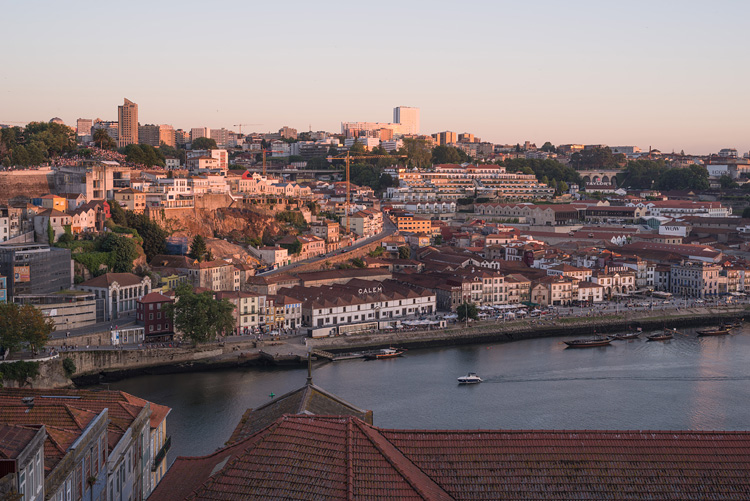
|
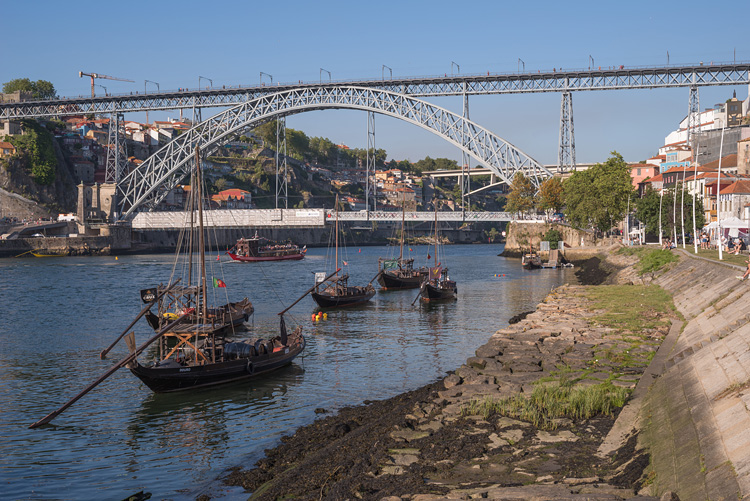
|
HareA huge hare, actually called "Half Hare" and made from garbage, is now an attraction in Gaia. |
Port WineThe Gaia side with its wine companies offers a great chance for tasting the wine. Be aware of the high alcohol content!
|
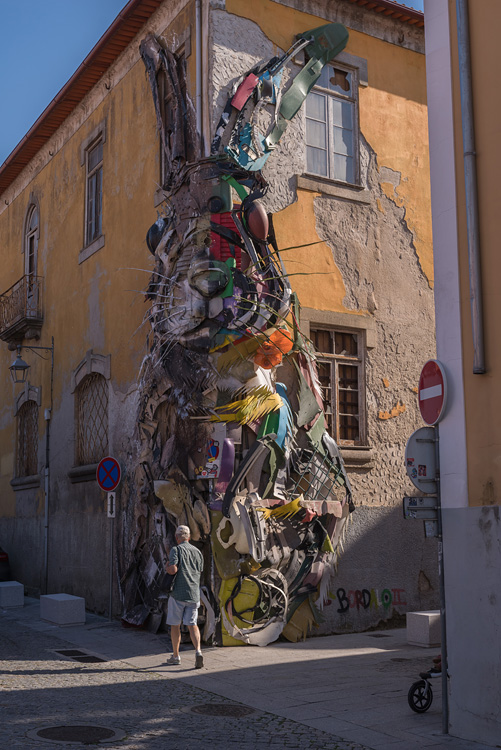
|
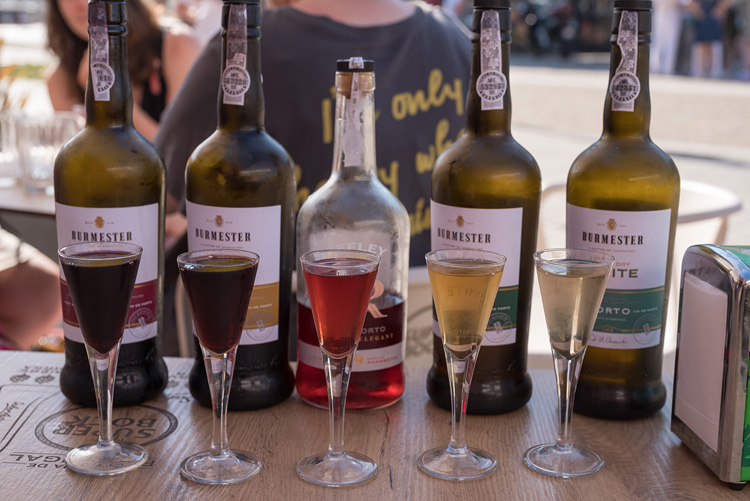
|
Atlantic coastThe beaches near Porto are of a good variety. |
SculptureA statue stands on the right bank close to the estuary of Douro.
|
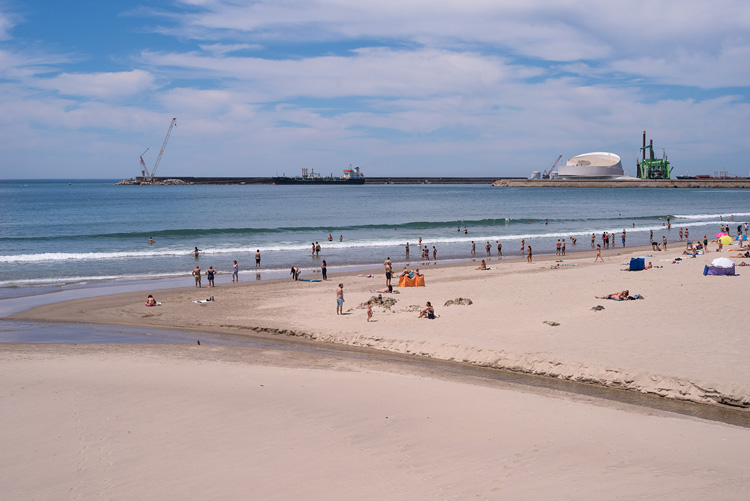
|
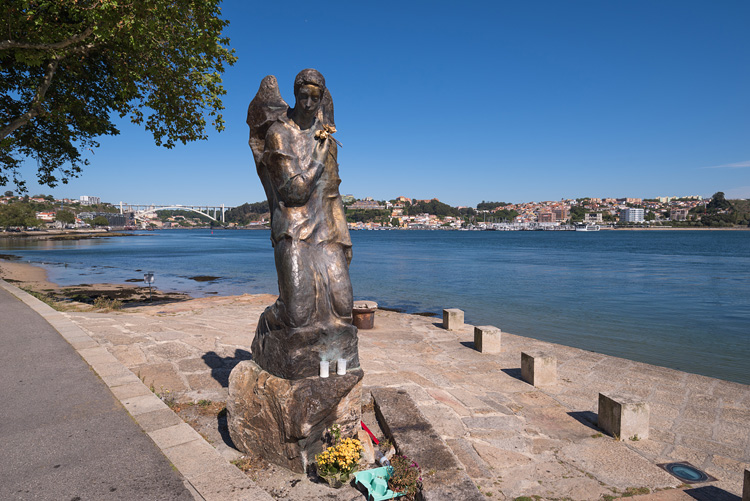
|
Estuary
The river widens and the tide can be felt. In the background you see the Ponte da Arrábida, the final one before the Atlantic.
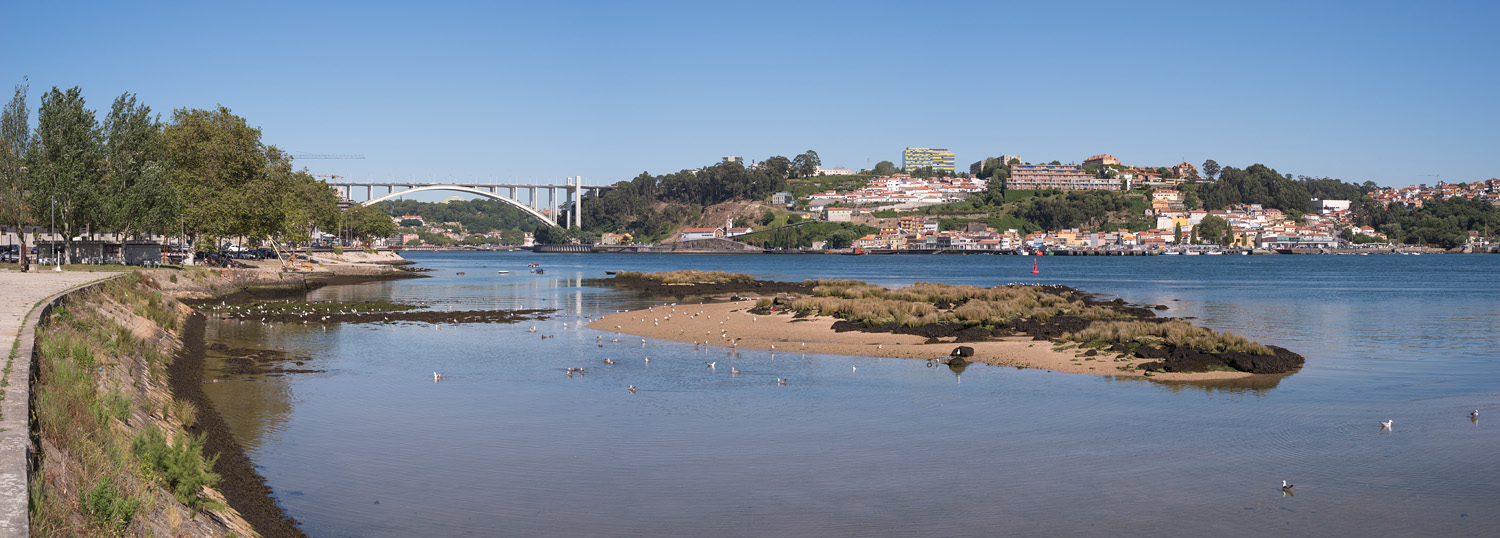
Forte de São Francisco Xavier
A small fortification dating back to the 17th century containing a small museum.
Fortaleza de São João da FozThis fortress was built in the 16th century to protect the mouth of Douro. The photograph shows its inner yard. |
SwimmingYoung people taking a bath in the river Douro.
|
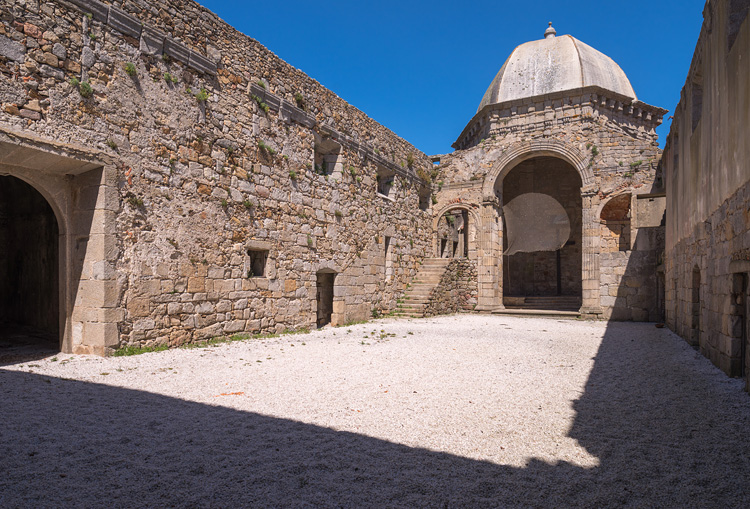
|
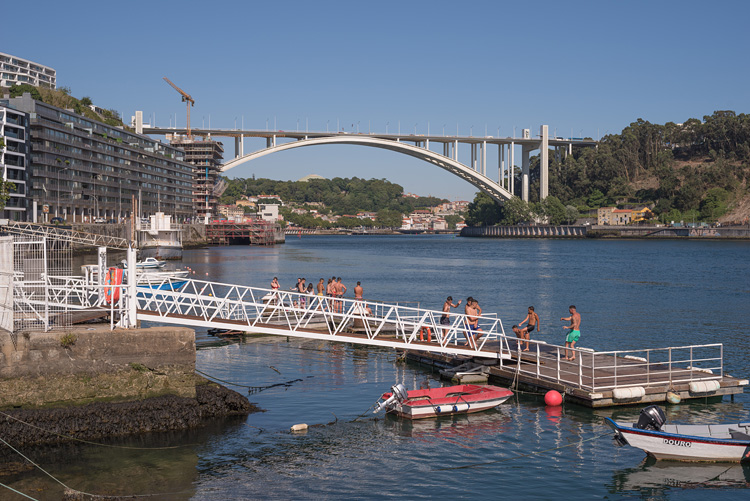
|
Boat ridesMany small boats take tourists for a ride along the river within the city limits. |
TramVery popular among visitors is the Linha 1 traveling along the Douro from the center almost to the estuary.
|
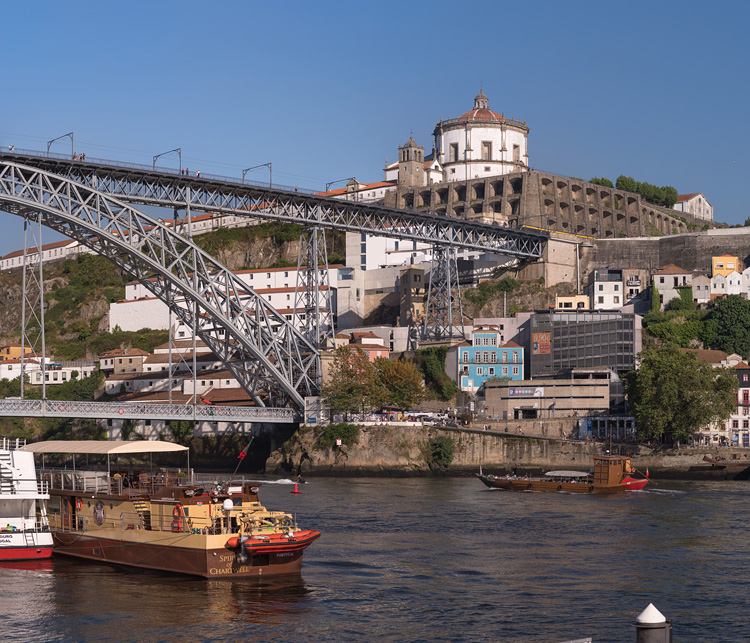
|
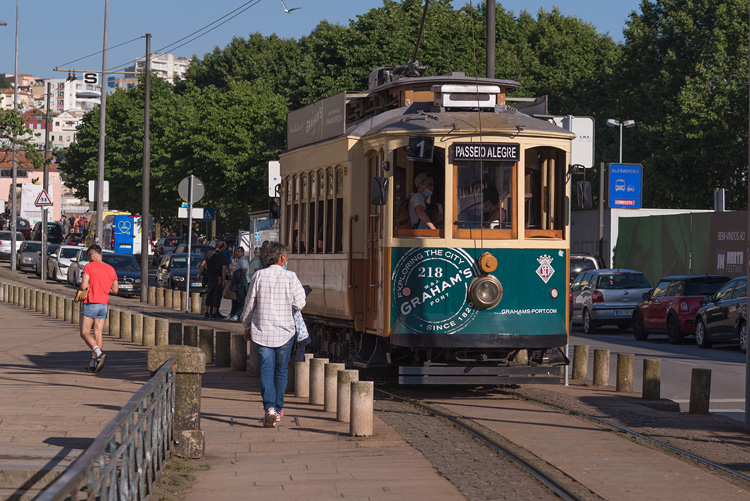
|
River View
Since it is the best of Porto (with the exception of wine), here is another panorama of the Douro valley.
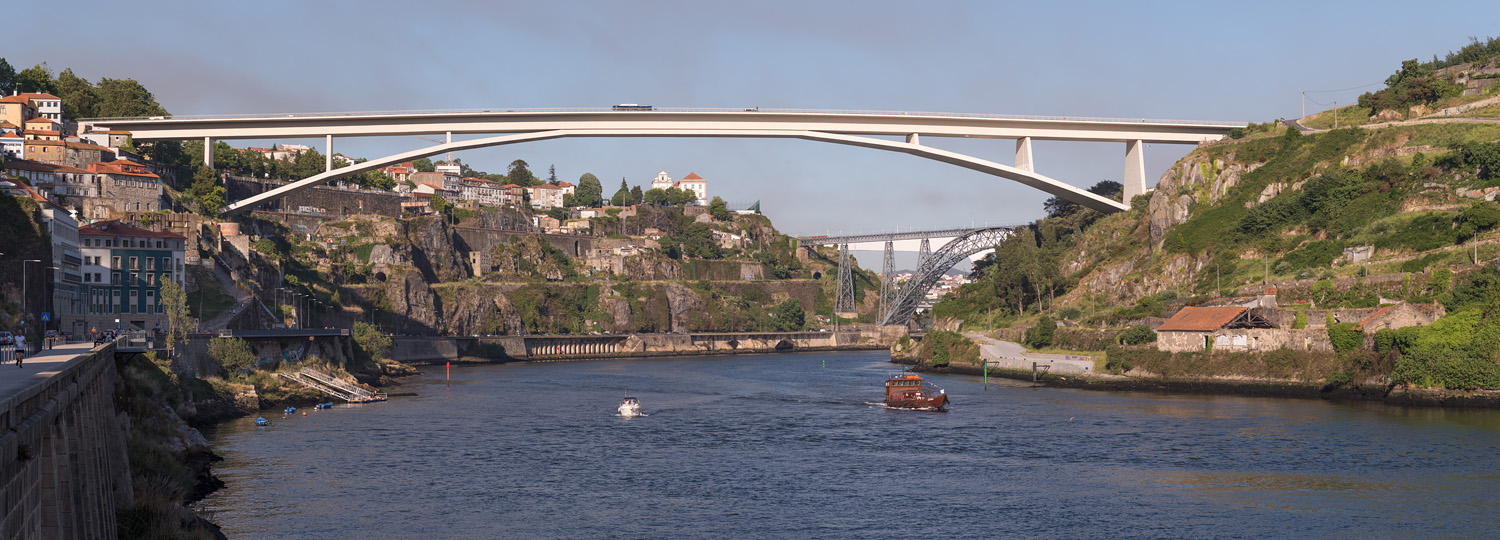
BACK
